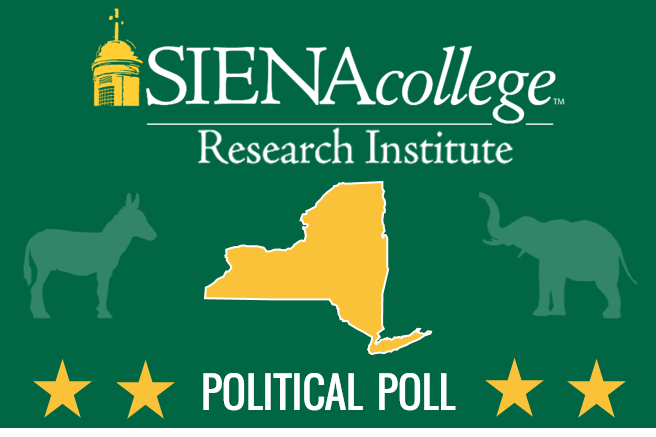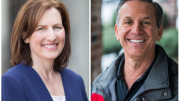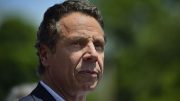Special New York Local Government Siena College Poll:
New Yorkers Trust & Rate Job Done by Local Governments As Better than that Done By State or Federal Governments
Majority of Voters Says Local Governments Beat the State On: Understanding Needs, Managing Tax Dollars, Getting Things Done
Local Services like Fire & Police Get High Marks; Support for More Spending on Infrastructure; However, Most Want Line Held on Local Taxes & Services
Loudonville, NY. While only 28 percent of voters across New York trust either the federal or state government to do what is right at least most of the time, 43 percent trust their local government most or all of the time. Similarly, only 27 percent give the federal government a positive job performance of either good or excellent, and 30 percent give the state a positive job performance rating while 42 percent say their local government is doing either a good or excellent job according to today’s new Special Local Government Siena College poll of registered New York State voters, sponsored by the New York Conference of Mayors (NYCOM), New York State Association of Counties (NYSAC) and the Association of Towns of the State of New York (AOT).
“While trust in government at every level is near historic lows, significantly more New Yorkers trust their local government most or all of the time than trust those working on their behalf either in D.C. or Albany. And when it comes to assessing the job that they are doing, over four in ten give local government a thumbs up while a third call the federal performance poor and a quarter put that black mark on state government,” said Don Levy, Director of the Siena Research Institute.
“When comparing local government and state government on three components of governing – understanding and responding to citizen needs, getting important things done and effectively managing tax dollars – voters across New York, especially upstate and in the downstate suburbs, say local government is better,” Levy said.
By 70 to 20 percent, voters say local government is better at understanding and responding to voter needs. By 57 to 33 percent, voters rate local government over the state when it comes to getting important things done. And by 54 to 30, percent they say local government is better than the state at effectively protecting and managing tax dollars. In every case, upstaters are most inclined to prefer the work of local government over the state while New York City voters are more evenly divided especially on getting things done and managing tax dollars.
No fewer than 61 percent of voters are at least somewhat satisfied if not completely satisfied with seven parts of local government. A near universal 96 percent are satisfied with the fire department, and 87 percent with both ambulance services and recreation. Seventy-eight percent are satisfied with the police department, water and sewer services receive a satisfaction grade of 77 percent, while 65 percent of voters are satisfied with schools and 61 percent with public works.
“When asked whether they would like to increase, decrease or keep spending unchanged on local services, only schools, 51 percent, and public works, 50 percent, receive the backing of a majority calling for increased spending,” Levy said. “Still, when spending more and increasing services are specifically tied to higher taxes, 51 percent say keep both taxes and services about the same, one-third call for providing fewer governmental services and lower taxes, while only one in eight say they would like more government services and higher taxes in order to pay for them.
“With half of New Yorkers calling for increased spending on public works and many hesitant to support increased taxes, it may not be surprising that when asked how they would like the Governor and Legislature to allocate the one-time $5 billion surplus the state received from bank settlements, 27 percent call for funding for local infrastructure and 15 percent advocate for state infrastructure,” Levy said.
This study received sponsorship from three organizations – NYCOM, NYSAC, and AOT that represent New York’s city, village, county and town governments.
“As leaders of New York’s three statewide associations providing support and advocacy for local governments, we are thrilled to work collaboratively to address the needs of not only our members but all New Yorkers. While we are enthused by the comparatively high grades local governments receive from taxpayers, we know that more must be done to build trust and increase satisfaction among all New Yorkers. The survey also reveals a surprisingly widely held misconception. Most New Yorkers do not know that two-thirds of their property taxes go to schools, while the remaining one-third goes to all other local taxing jurisdictions (i.e., counties, cities, towns, villages, special districts) combined. Voters actually perceive just the opposite. We believe this finding further demonstrates the need for more publicly transparent discussions when it comes to state funding and statewide property tax policy.” –Gerry Geist, Executive Director, AOT; Stephen Acquario, Executive Director, NYSAC; Peter Baynes, Executive Director, NYCOM
This Siena College Poll was conducted February 9-15, 2015 by telephone calls conducted in English to 815 New York State registered voters. Respondents were selected by asking for the youngest male in the household. It has an overall margin of error of +/- 3.4 percentage points including the design effects resulting from weighting. Sampling was conducted via a stratified dual frame probability sample provided by Survey Sampling International of landline and cell phone telephone numbers from within New York State weighted to reflect known population patterns. Data was statistically adjusted by age, party, region and gender to ensure representativeness. The Siena College Research Institute, directed by Donald Levy, Ph.D., conducts political, economic, social and cultural research primarily in NYS. SRI, an independent, non-partisan research institute, subscribes to the American Association of Public Opinion Research Code of Professional Ethics and Practices. For more information, call Don Levy at 518-783-2901. For survey cross-tabs: www.Siena.edu/SRI/research.





